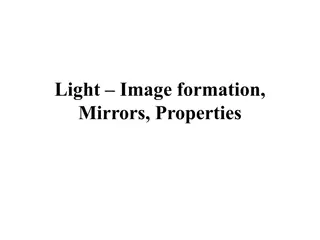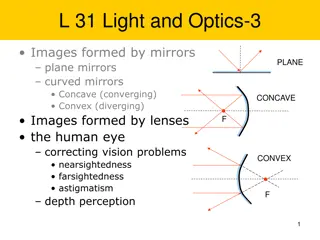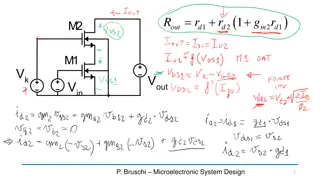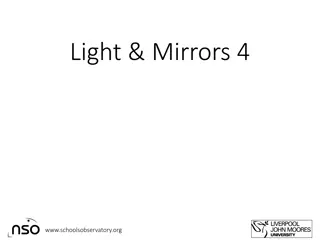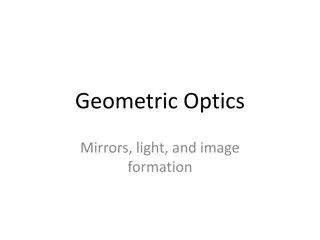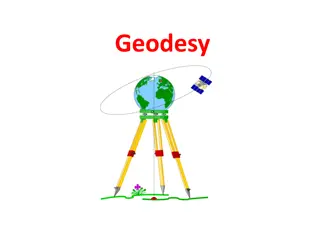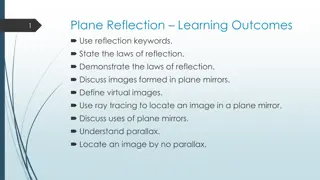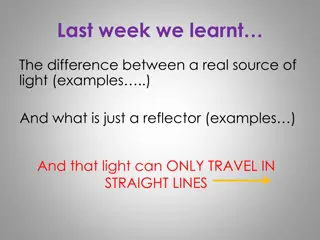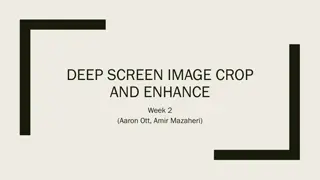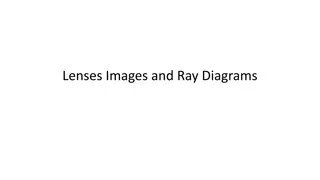Understanding Spherical Mirrors: Concave and Convex Types, Image Formation, and Practical Uses
Spherical mirrors, including concave and convex types, play a crucial role in reflecting light. By exploring the properties of concave and convex mirrors, understanding image formation, and discovering their diverse applications in daily life, we can grasp the significance of these mirrors in science and everyday scenarios.
Download Presentation

Please find below an Image/Link to download the presentation.
The content on the website is provided AS IS for your information and personal use only. It may not be sold, licensed, or shared on other websites without obtaining consent from the author. Download presentation by click this link. If you encounter any issues during the download, it is possible that the publisher has removed the file from their server.
E N D
Presentation Transcript
Class-VII SUBJECT:SCIENCE CHAPTER-15 LIGHT MODULE-2/3 PREPARED BY:SUNIL KUMAR YADAV T.G.T (CHEM/BIO) A.E.C.S. NO.2 ,RAWATBHATA
SPHERICAL MIRRORS Spherical mirrors are curved mirrors. Spherical mirrors are of two types depending upon the surface which reflecting surface acts as
ACTIVITY Take a stainless steel spoon. Bring the outer side of the spoon near your face and look into it. OBSERVATION: We see our image on the surface of spoon , but this image is different from that formed by a plane mirror. Similarly inner side of the spoon also acts as a mirror but the surfaces are curved .The outer and inner surface of the spoon act as two different types of mirrors. Note: The inner surface of a spoon acts like a concave mirror , while its outer surface acts like a convex mirror.
oConcave mirror: If the reflecting surface of a spherical mirror is concave,it is called a concave mirror.For example the inner surface of a steel spoon acts like a concave mirror. oConvex mirror: If the reflecting surface of a spherical mirror is convex, then it is called a convex mirror. For example the outer surface of a steel spoon acts like a convex mirror.
TYPE OF IMAGE FORMED BY CONCAVE MIRROR The image formed by a concave mirror can be smaller , same size or larger than the object. The image can be real or virtual . The image can be erect or inverted
USES OF CONCAVE MIRROR Doctors use concave mirrors for examining eyes , ears , nose and throat. Dentists use concave mirrors to see enlarged image of teeth. Concave mirrors are used as reflectors in torches , headlights of cars and scooters.
TYPE OF IMAGE FORMED BY CONVEX MIRROR The image formed by a convex mirror is virtual. The image is erect. The convex mirror always forms image smaller than the object.
USES OF CONVEX MIRROR Convex mirrors are used as side mirrors in cars and scooters. Convex mirrors can form images of objects spread over a large area. So these mirrors help the drivers to see the traffic behind them


